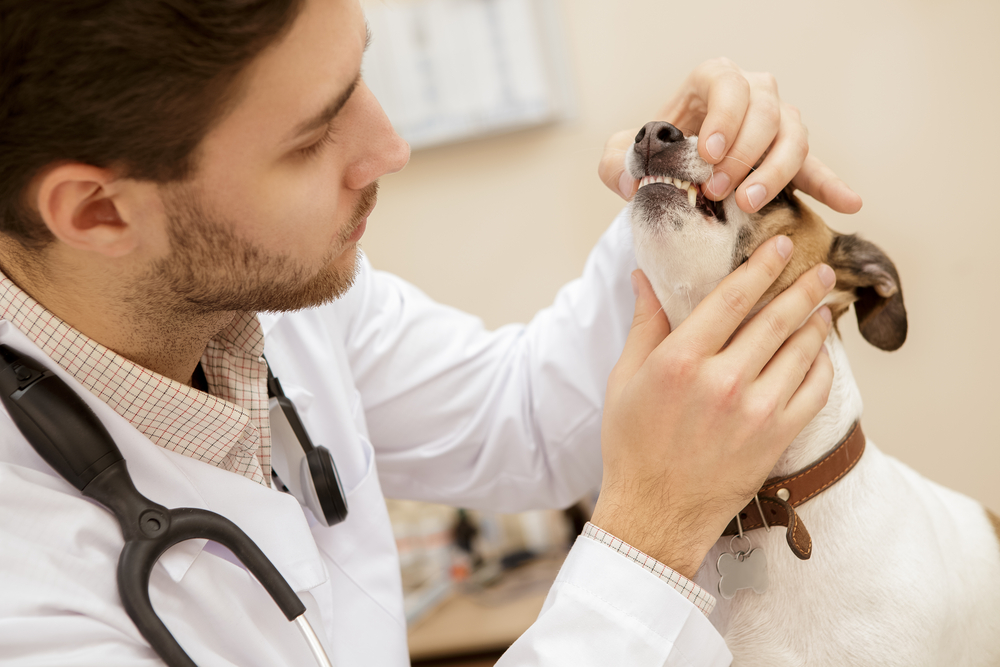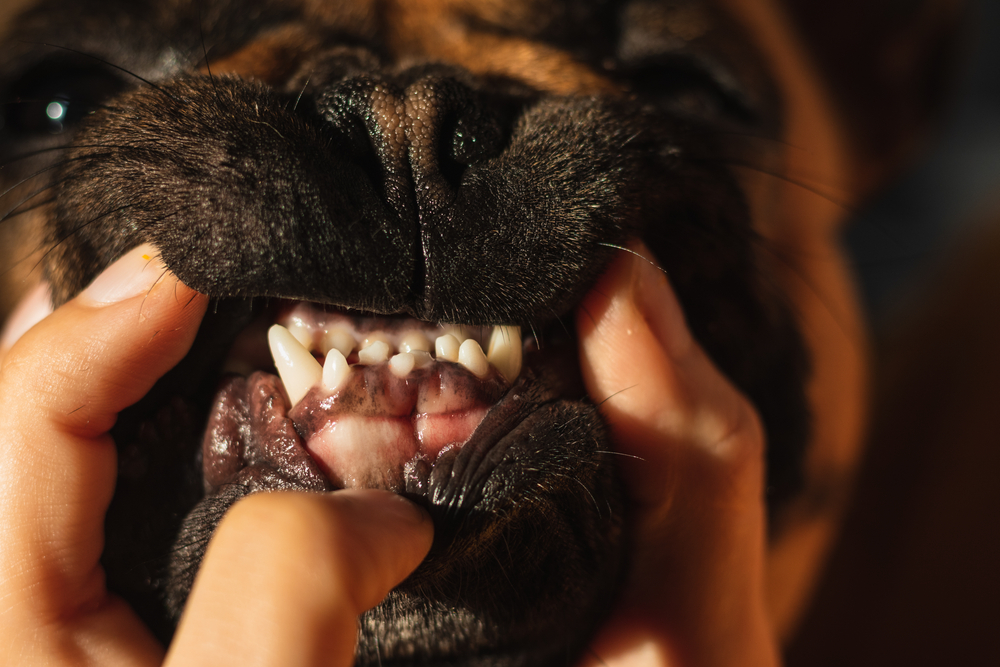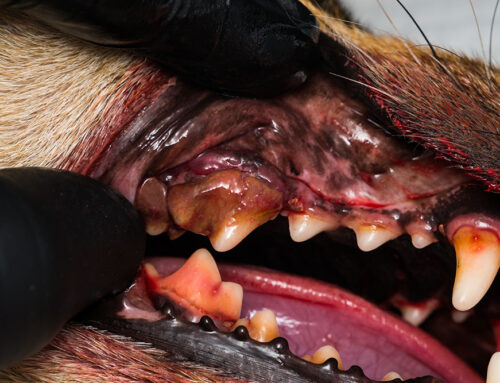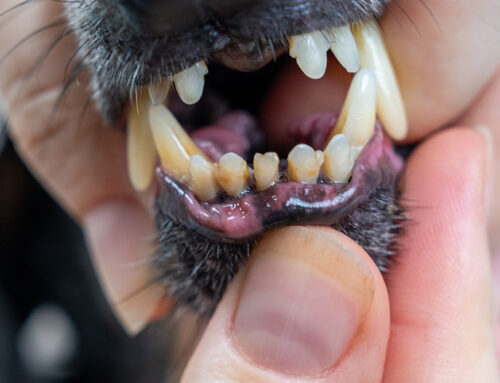You may think your dog’s underbite adds to their charm, but malocclusions (i.e., misaligned teeth) can cause serious health issues for your canine friend. Our North Bay Veterinary Dentistry team doesn’t want your dog’s smile to be painful, and we provide information about why malocclusions can be problematic, and how these issues are addressed.
What are malocclusions in dogs?
Occlusion refers to how teeth align with each other. In dogs who have a normal occlusion, the upper incisors barely overlap the lower incisors, the lower canines are equi-distant between the upper third incisor and the upper canine teeth, and the lower jaw premolars orient between the upper jaw teeth. A malocclusion is abnormal tooth alignment, and is categorized as skeletal or dental:
- Skeletal malocclusion — Skeletal malocclusions occur when an abnormal jaw length creates a tooth misalignment. Examples include:
- Mandibular brachygnathia — Mandibular brachygnathia refers to what most dog owners call an overbite. The dog’s lower jaw is shorter than the upper jaw, and the dog’s lower teeth don’t align normally with their upper teeth when their mouth is closed.
- Maxillary brachygnathia — Maxillary brachygnathia refers to what most dog owners call an underbite. The dog’s lower jaw is longer than the upper jaw, and the lower incisors orient in front of the upper incisors. If the malocclusion is minimal, the dog’s incisors may meet, resulting in a level bite.
- Maxillomandibular asymmetry — Asymmetry between the upper and lower jaws can involve a disparity between the right and left sides (i.e., front to back asymmetry), the upper and lower jaws not centering and causing a midline shift (i.e., side-to-side symmetry), or an abnormal space between the upper and lower jaws (i.e., open bite).
- Dental malocclusion — Dental malocclusions occur when the upper and lower jaw lengths are normal, but one or more teeth are misaligned. Examples include:
- Distoversion — The tooth is in the correct anatomic position, but is abnormally angled away from the body midline.
- Mesioversion — The tooth is in the correct anatomic position, but is abnormally angled toward the body midline.
- Linguoversion — The tooth is in the correct anatomic position, but is abnormally angled toward the tongue.
- Buccoversion — The tooth is in the correct anatomic position, but is abnormally angled toward the cheek or lips.
- Crossbite — A rostral crossbite occurs when the canines and premolars are normally aligned, but one or more lower incisors sit in front of the upper incisors when the dog’s mouth is closed. A caudal crossbite occurs when one or more of the lower cheek teeth are closer to the cheek than the upper cheek teeth when the dog’s mouth is closed.
Why are malocclusions in dogs a problem?
Malocclusions can be problematic for dogs for several reasons, including:
- Pain — Malocclusions can cause the dog’s teeth to penetrate into the opposing soft tissue structures, resulting in significant pain. If left untreated, they can lead to a hole forming between the mouth and nose, or damage other important structures.
- Eating difficulties — Malocclusions may make eating more difficult.
- Periodontal disease — Malocclusions can increase the dog’s risk for periodontal disease.
- Foreign material impaction — Foreign material, such as plant material, food remnants, and pebbles, can easily lodge in the dog’s mouth when the malocclusion creates abnormal gaps. This results in inflammation that can further contribute to pain and periodontal disease.
- Growth interference — Deciduous teeth that are misaligned and trapped in opposing soft tissue can interfere with the normal growth and elongation of the dog’s upper and lower jaws.
- Tooth damage — Abnormal contact between opposing teeth often damages the involved teeth, and can cause significant pain if the dentin is exposed.

How are malocclusions in dogs diagnosed?
A dog’s malocclusion may be obvious, but your dog may need sedation or anesthesia so their dental anatomy can be fully evaluated. In addition, dental imaging (x-rays or cone beam CT) may be needed to properly evaluate your dog’s occlusion.
How are malocclusions in dogs treated?
If your dog’s malocclusion causes trauma to their oral soft tissues or other teeth, treatment is necessary and options include:
- Extracting the tooth penetrating soft tissue or contacting a tooth in the opposing jaw
- Extracting the tooth that is inhibiting normal occlusion in the opposing jaw
- Amputating the crown and performing full or partial root canal treatment
- If very mild, blunting the tip of the tooth contacting the soft tissues or teeth
- Moving the affected tooth in to a more position (orthodontics)
- Treating the soft-tissue injuries and damaged teeth caused by the malocclusion
Malocclusions are a serious issue that can lead to significant problems for dogs and cats. If you are concerned about your pet’s occlusion, contact our team at North Bay Veterinary Dentistry, so we can determine if they have a malocclusion that needs correcting.






Leave A Comment